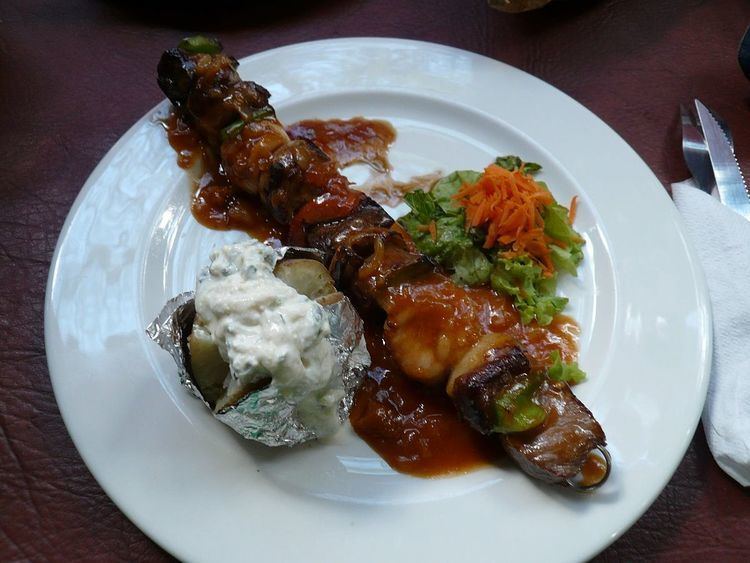 | ||
Namibian cuisine is the cuisine of Namibia. It is influenced by two primary cultural strands:
Contents
Indigenous cookery
In the precolonial period indigenous cuisine was characterised by the use of a very wide range of fruits, nuts, bulbs, leaves and other products gathered from wild plants and by the hunting of wild game. The domestication of cattle in the region about two thousand years ago by Khoisan groups enabled the use of milk products and the availability of meat. However, during the colonial period the seizure of communal land in Namibia helped to discourage traditional agriculture and reduced the extent of land available to black people.
Settler cookery
Namibia was settled by German colonists during the nineteenth century, and German influence on white Namibian cookery remains very strong. One example of German settler cuisine is Wiener schnitzel.
Brewing
The German brewing tradition continued in colonial German South-West Africa, with German lager beers including Hansa and Windhoek lagers still brewed in the country for domestic consumption and export.
